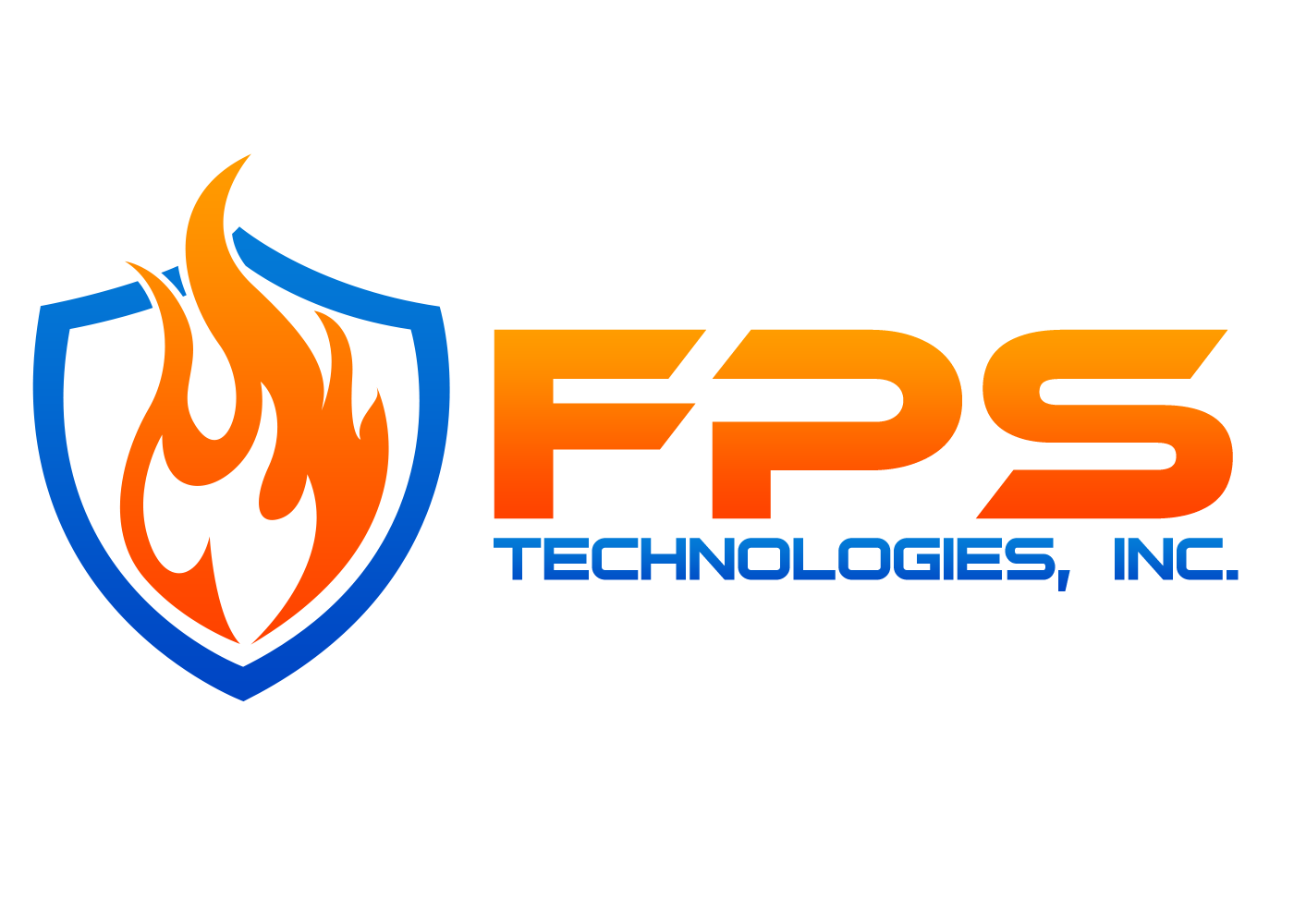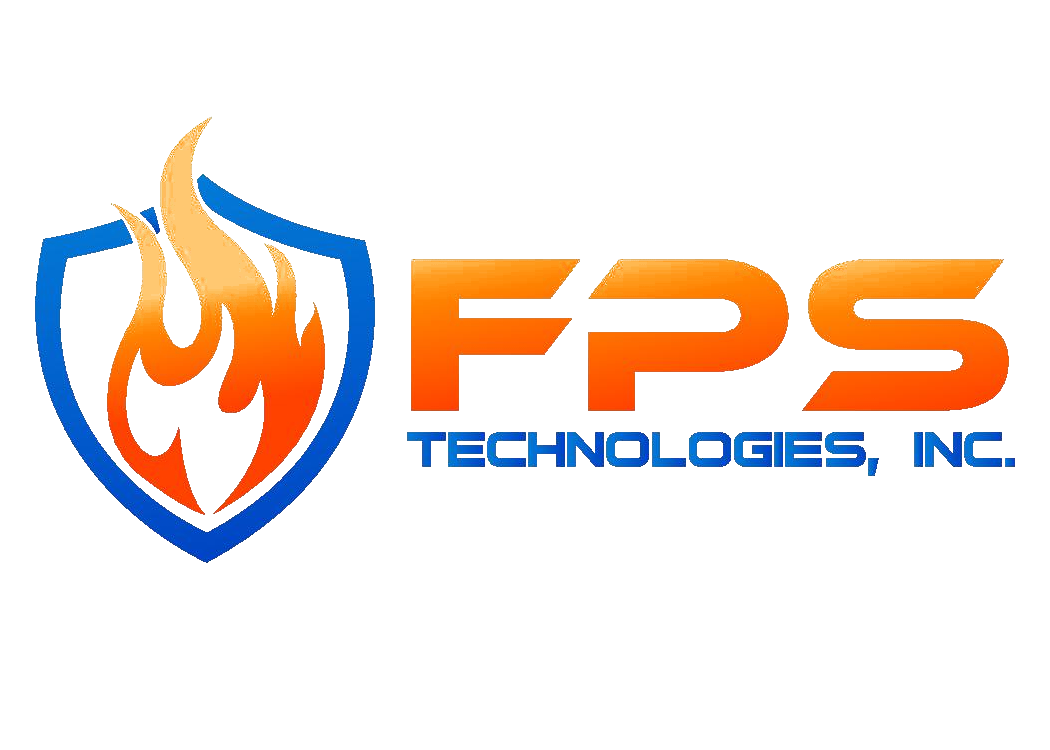A fire can set your business back for years. Without systems to extinguish the flames quickly, even a small fire can destroy your manufacturing equipment, inventory, office space, digital data, and more. The good news is that you can protect your livelihood with a sprinkler system.
You might be surprised to find out that there are actually two different kinds of sprinkler systems: wet and dry. Which system is right for your industrial space? Read on to find out.
Wet sprinkler systems
The most common type of sprinkler system is the wet system. In this type of system, pressurized water is stored inside the pipes. When a sprinkler head detects heat, the system detects discharges automatically.
Pros of a wet sprinkler system
- Response time — When it comes to response times, a wet sprinkler system outperforms a dry system. Since water is always present inside the overhead piping, it can be discharged immediately if the system detects a fire.
- Simple and low-maintenance — If your manufacturing space is already full of complex mechanical systems, storage tanks, and ventilation, then you probably don’t want to add another high-maintenance system to your building. Wet sprinkler systems are easy to install and require very little maintenance. They’re also easier to reset after they activate than a dry system. All you have to do is replace the sprinkler heads that turned on and refill the piping with water.
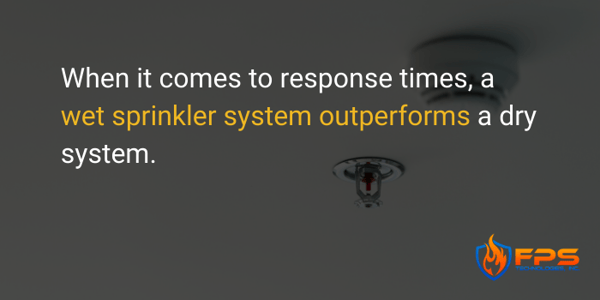
Cons of a wet sprinkler system
- Cannot function at low temperatures — Wet sprinkler systems are not well-suited to spaces where the temperature falls below 40°F. Low temperatures can cause the water in the system to freeze, which can lead to burst pipes and expensive repairs. If your warehouse or manufacturing complex has high ceilings, and it’s not feasible to heat the space in cold months, then a wet system may not be the correct choice for that area of your facility.
- Unable to activate all sprinkler heads at once — Do you manufacture flammable equipment? If so, you may want your sprinkler system to spray water from all sprinkler heads at once. In a typical wet system, that’s not possible because each sprinkler head is activated locally. That means that only heads that detect heat will spray water, while the others stay closed.
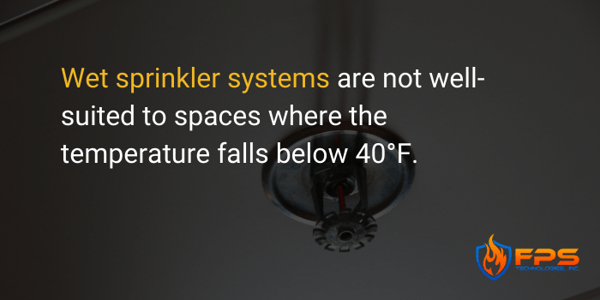
Dry sprinkler systems
Though the name might suggest otherwise, dry sprinkler systems do use water to extinguish fires. The biggest difference between wet and dry systems is where the water is stored. Dry systems do not store water inside the pipes. Instead, the pipes are pressurized with air or nitrogen to keep a remote valve, also called the dry pipe valve, closed. When the system is on standby, the pipes are dry, thus the name. When a sprinkler head detects heat from a fire, the pressure in the pipes drops to release the valve and bring water to the activated sprinkler head.
Pros of a dry sprinkler system
- More ideal for sensitive equipment — Your sensitive equipment needs protection from a fire, but it also needs protection from unnecessary water exposure. Since there isn’t water in the pipes unless there’s a fire, you don’t have to worry about water leaks damaging any of your server equipment, for example.
- Ability to function in low temperatures — Fires happen whether it’s hot or cold, and the last thing you want is for your sprinkler system to malfunction because the pipes are frozen. Dry systems function at any temperature, ensuring that your property is protected in every season.
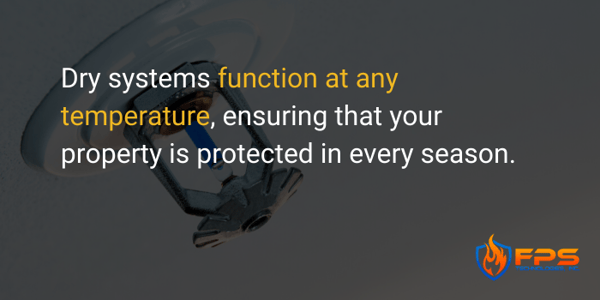
Cons of a dry sprinkler system
- Slower response time — Dry sprinkler systems have a slower response time than wet because the water is not stored inside the overhead piping. Instead, the water has to travel from a source to the activated sprinkler head. The greater the distance between the source and the sprinkler head, the longer the response time. In some cases, it can take up to 60 seconds for the water to reach the fire.
- Higher maintenance — Dry systems tend to be more complex and higher maintenance than wet systems – especially after they activate. Once a dry system extinguishes a fire, you must drain all of the water out of the piping and refill it with compressed air or nitrogen. You also need to drain the system quarterly to remove any accumulated moisture from condensation to ensure that the pipes don’t freeze.
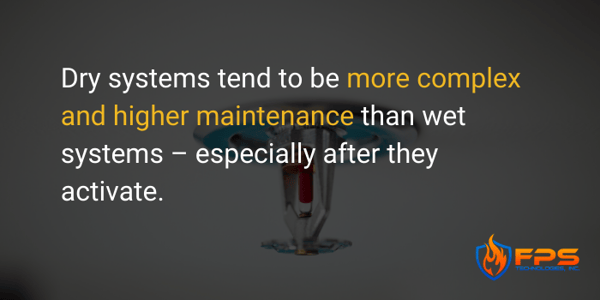
Want to make sure you choose the right sprinkler system for your industrial space?
Sprinkler systems provide a reliable way to protect your space from a fire and can help to minimize building and equipment damage. The two systems, wet and dry, offer different advantages depending upon the space and equipment you’re protecting. Still unsure which system is right for you? Get in touch with one of our technicians to discuss which is best for your industrial space.
